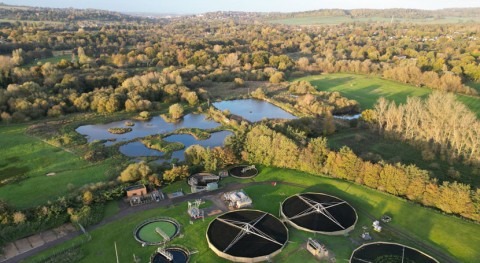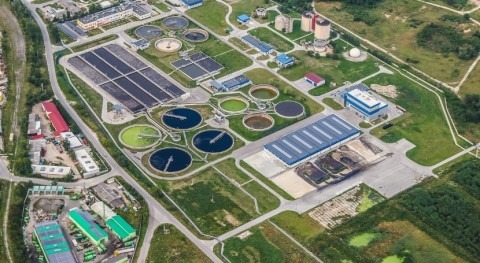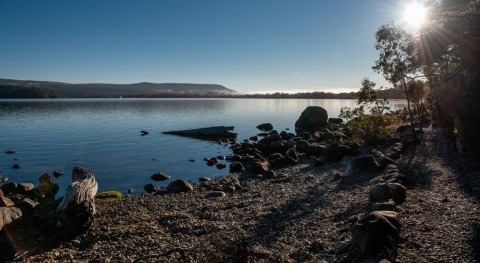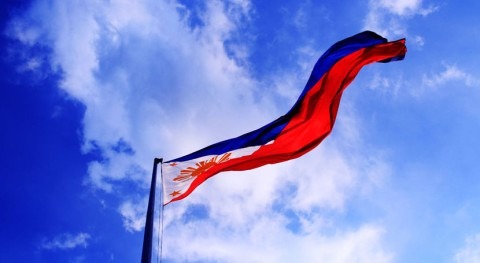Julián Suárez, Vice President for Sustainable Development of CAF (Development Bank of Latin America) gave an interview to Notimérica during the 4th edition of the 'Latin America-Spain Water Dialogues', where he highlighted the main challenges with regards to water in both regions, the keys to improve water efficiency and conservation in Latin America and Spain, and the new projects that CAF is undertaking in this area, among other issues.
Question: Innovation is presented as an essential tool for efficient water management. What are the main priority innovation areas to achieve this objective?
Answer: Innovation in drinking water and sanitation services, and in agricultural irrigation, are two major water uses. The first one relates to a human right, and as such there are goals defined in the framework of Sustainable Development Goals (SDG), to ensure universal access to both services. In the case of the second use, irrigation represents more than 80% of water abstractions, being the primary water use. This poses the challenge of incorporating innovation to the management of water resources, in order to improve efficiency and water conservation, with solutions that are more productive, inclusive and resilient.
Q: What barriers do countries face when it comes to implementing public policies to solve water issues in a sustainable manner?
A: Assigning a fair value to water is a key point: a value that is consistent with the many benefits water provides. It is a scarce and very valuable resource, providing benefits which include improved public health, more efficient food production, more competitive socio-productive development, and the preservation of ecosystems. Proper water cycle management complements sustainable development.
Therefore, it is important to increase investments in the water sector. For example, it is estimated that the drinking water and sanitation sub-sector will require annual investments of about 114 billion US dollars worldwide to ensure universal access to drinking water and sanitation. The historical investments in the past few years have been well below that. In Latin America, the CAF estimates that the investments required amount to 0.3% of the regional GDP, which would be about 16 billion US dollars per year. Looking at the expenditures of some countries, we estimate that the investments in the region are gradually getting closer to that level, but are not there yet.
In addition, we can manage better the existing infrastructure and resources. A recent study done by the CAF in 26 Latin American cities, entitled 'The urban dimension of water security in Latin America', reveals percentages of non-revenue water of more than 40%, with peaks higher than 60%.
In other cases, per capita consumption is well above what can be considered an efficient demand. This points out that we need more intense efforts to improve management, optimising resource planning, regulating and monitoring systems. For example, innovation can be encouraged with results-oriented funding models, or management and services contracts where performance is linked to outcomes.
Water should be considered a part of the urban ecosystem
Q: Is innovation the only thing that needs to be stressed in order to have efficient water management?
A: Innovation serves a variety of purposes: to ensure a more rational water use, to encourage investments that have an impact on development, to extend the useful life of existing assets, and to make better decisions, based on reliable and timely information.
The efforts towards the conservation and rational use of water are not trivial, since more than half of the world's population lives in areas with potential water scarcity at least one moth per year, and it is estimated than in 2025 more than 60% of the world's population will be exposed to water stress. In this context, it is necessary to leverage the different water resources available according to the different uses and follow certain principles: reduce pollution, remove pollutants, reuse waste water/grey water and recover water by-products. In other cases, innovation allows predicting what will be the consumption of users and sizing the infrastructure better, leading to a higher return on the investment.
It is also necessary to encourage investments, innovation, capacity building and accountability.

Q: If we only focus on innovation, would we ignore the renewal of existing infrastructure?
A: Not at all. The use of technology allows managing a lot more information and introducing new procedures to operate or extend the useful life of existing infrastructure, planning better the operation of systems. It is not only about investing more, often we need to improve the operation of existing systems.
Technological innovations also provide opportunities to save costs through the use of smart technologies to manage assets. These technologies help to identify priorities for the replacement of equipment and identify the infrastructure that needs maintenance, thus extending their useful life.
These innovations are successful to the extent that they are designed with the consensus and subsequent commitment of all stakeholders involved, including companies, governments, communities, service providers and users.
Q: Even though Latin America has a wealth of natural resources, currently there are still 25 million people in the region with no access to drinking water, and 89 million without basic sanitation services. When will we be able to say there is universal access to drinking water and sanitation services?
A: According to the SDGs, we should achieve universal access to both services by 2030. This would involve increasing significantly traditional funding sources and also attracting some non-traditional sources of funds, such as pension funds, insurance and local business banking. It will require more efficient service providers, States that can concentrate their efforts on relevant subsidies, and also generating incentives for users to value water and sanitation.
The SDGs do not only entail increased coverage of services. They emphasise the quality of those services. Some countries in Latin America have achieved access and quality levels comparable to those of high-income countries. Yet in other countries there are still deficiencies concerning access, and also service continuity and quality. In terms of sanitation, the gaps are larger, with even capital cities lacking waste water treatment. In smaller cities and rural areas, the challenges are even greater.
In 2025 more than 60% of the world's population will be exposed to water stress
Q: Are public and private companies and governments aware of these issues and working to implement policies that can solve them?
A: Good progress has been made. For example, at the CAF we support several countries in Latin America linking infrastructure components with institutional strengthening. We are also developing different knowledge products to share best practices, and increase support by public representatives. To this effect, we are completing studies on the economic cost of lacking access to water and sanitation in several countries in the region, which we hope to share with governments in the region in the coming months.
Q: What projects or initiatives is the CAF carrying out in Latin America with regards to water?
A: In the past 10 years, the CAF has approved water initiatives worth more than 6 billion dollars in several sub-sectors and with different geographical scopes. We support access to safe water and sanitation services in rural communities in Bolivia, and in small cities in Ecuador and Brazil. We also provide support to improve water quality in Argentina, Ecuador and Venezuela, and to waste water treatment plants in Argentina, Bolivia, Ecuador, Panama and Venezuela.
In addition, we have projects to support irrigation in family farms in Bolivia, which we hope to replicate soon in other countries who have shown much interest in these initiatives. And we have funded agro-industrial irrigation projects in Peru. In the area of flood control, we have projects ongoing in Argentina and we are now assessing initiatives in several countries in the region, including several countries in Central America. We have an interesting and diverse agenda, and we are looking forward to significant growth.
Q: What elements should a city have to be considered an example of good water resource management? Are there any cities that stand out?
A: Water should be considered a part of the urban ecosystem. That is, we have to adopt a holistic approach that includes the basins that provide water to the city, and also those basins where the city discharges its waste water. It is important to preserve the resource and the dimensions of the water courses that flow through cities, and to avoid polluting them with domestic or industrial waste water, or with solid waste. Controlling riparian settlements along water courses and lakes should be part of urban planning and it is closely linked to water, because gradual development in riparian buffer zones puts human lives at risk, especially during high flow events.
Similarly, we should emphasise nature-based solutions, such as wetland restoration and groundwater aquifer recharge, that contribute to a healthier environment.
Digitalization has an essential role with regards to everything I have mentioned. For example, to measure precipitation in real time, predict increases in water flows and improve early warning systems, or to manage infrastructure appropriately and mitigate high flow events. It also allows modelling water scarcity scenarios, to prevent severe drought and set up contingency plans. In terms of water supply and sanitation services, technology enables better system operation, reducing the operating costs borne by providers, and even reducing the costs borne by users, by optimising their consumption and detecting leakages.
Therefore, at the CAF we are optimistic. Within our initiative Cities with a Future, we are supporting several countries in Latin America who are working towards becoming Water Smart Cities, Resilient Cities, and other similar initiatives.


















